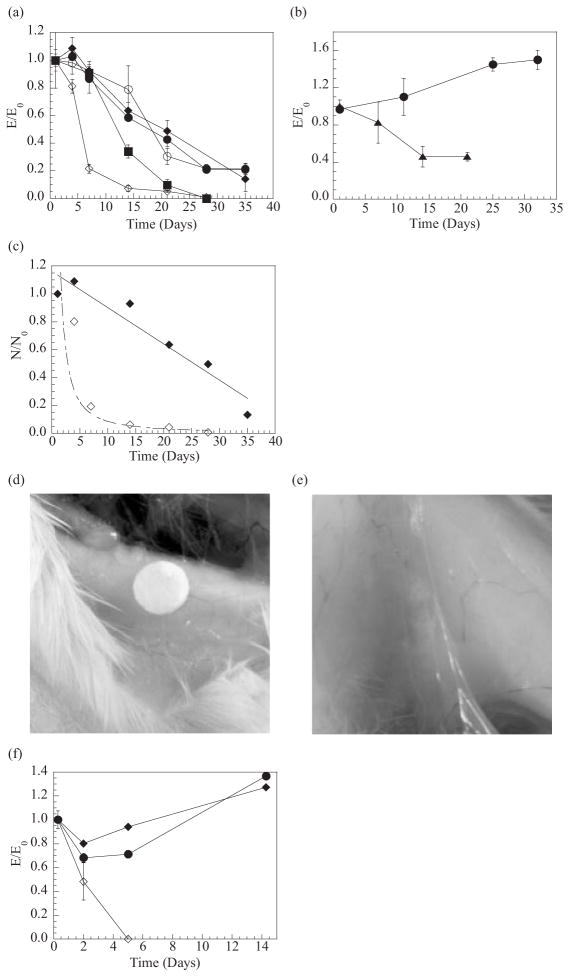Figure 1.
In-vitro and in-vivo degradation of hydrogels prepared with polymer chains having different molecular weight (MW) or MWG. In-vitro experiments showed that binary MVM hydrogels possessing a mismatch in the size of crosslinking junctions exhibited faster reductions in elastic modulus (E) (a),(b), and reductions in the number of crosslinks (N) (c), as compared with other hydrogels formed from polymers of a uniform MW or a mix of high-and low-MW polymers all having the same size of segments to form crosslinking junctions. Hydrogels possessing a crosslinking zone size mismatch (i.e., gels consisting of MVG and MVM) also showed a faster reduction in E, as compared with unary MVG gels (b). Data in (a) and (b) were obtained from gels incubated in PBS and α-MEM, respectively. In-vivo experiments conducted via implantation of gel disks into SCID mice demonstrated that binary MVG gels maintained their structure over the entire time period (~100 days) (d), while binary MVM gels fragmented, or disappeared (e). Measurements of E from retrieved gels revealed an increase in E for unary MVG and binary MVG gels, and decrease in E of binary MVM gels over time (f). -●- Unary MVG hydrogels, -○- unary MVM hydrogels, -■- unary low-MW MVG hydrogels, -◆- binary MVG hydrogels, -◇- binary MVM hydrogels, and -▲-hydrogels consisting of high-MW MVG and high-MW MVM. E0: elastic modulus measured after 1 day.

